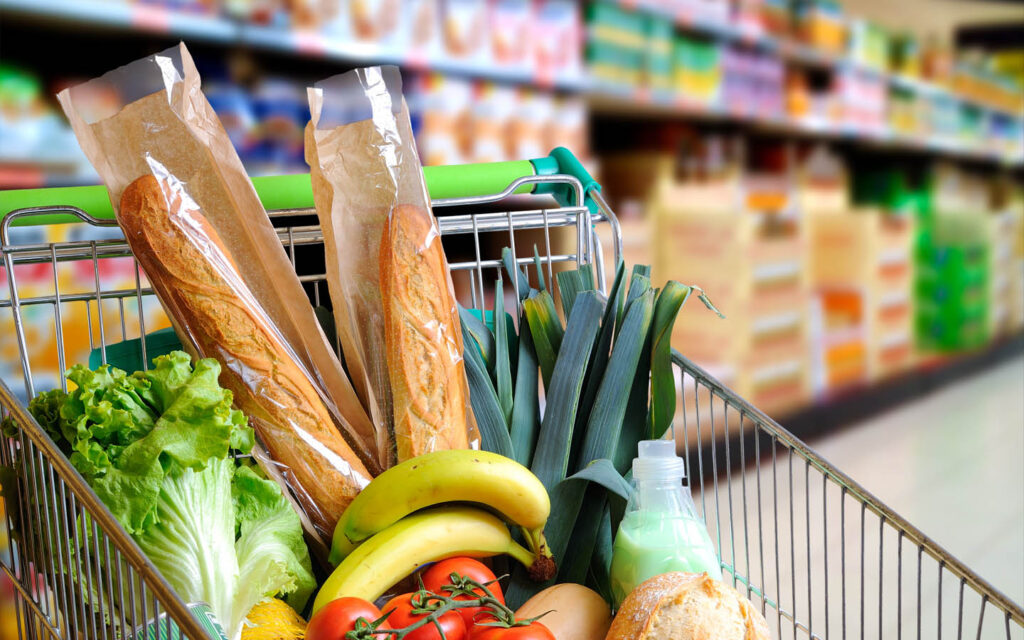
South Korea’s food and grocery retail market is projected to experience robust growth over the coming years, propelled by changing consumer preferences and the rapid expansion of e-commerce. The country’s highly urbanized and tech-savvy population has embraced online grocery shopping, a trend that accelerated due to the COVID-19 pandemic and is now becoming a permanent feature of the retail landscape.
South Korea’s grocery retail market is characterized by a diverse array of modern supermarkets, hypermarkets, convenience stores, and online platforms, all catering to a demanding consumer base that prioritizes convenience, health, and sustainability. Retailers are increasingly offering services such as same-day delivery and contactless shopping, tapping into the rising consumer demand for both speed and safety in the grocery shopping experience.
Health-conscious consumption trends are driving significant changes in product offerings. Korean consumers are increasingly seeking out organic, eco-friendly, and functional foods, as awareness about health and wellness continues to rise. This shift is also influencing the product portfolios of major retailers, who are prioritizing healthier and more sustainable options to meet consumer demand.
Step into the progressive aisles of the food and grocery retail market, where every product tells a story of sustenance and satisfaction. Fresh off the press in FMI’s new report, a culinary chronicle advancing the current valuation of US$ 12.4 trillion in 2024. By 2034, the market could reach a valuation of US$ 17.1 trillion, representing a sluggish CAGR of 3.3%.
Key Market Drivers:
- The expansion of e-commerce and online grocery delivery platforms is transforming how South Koreans shop for groceries. Companies like Coupang and Shinsegae are leading the charge, offering a variety of grocery products through easy-to-use apps and fast delivery services.
- The growing trend towards premiumization in the food sector is driving consumers to pay more for high-quality, imported goods, organic products, and innovative health supplements.
- The focus on sustainability is gaining traction, with South Korean consumers showing an increasing preference for brands and retailers that adopt eco-friendly packaging and ethical sourcing practices.
Challenges and Opportunities: Despite the growth potential, traditional brick-and-mortar grocery stores face mounting pressure to adapt, as consumers increasingly turn to online channels. Retailers will need to invest in digital infrastructure, logistics, and personalized marketing to stay competitive in the evolving landscape.
Moreover, the rising demand for plant-based foods, gluten-free products, and functional foods presents a unique opportunity for market players to expand their product lines and cater to specific dietary needs.
As consumer preferences continue to evolve, South Korea’s food and grocery retail market is expected to maintain a steady growth trajectory, driven by innovation in online retailing, product offerings, and sustainability initiatives. Key players are likely to focus on adopting cutting-edge technology, including AI-driven customer insights, automated warehousing, and supply chain optimization, to stay ahead in the competitive market.
Diverse Needs and Preferences of Tech-Savvy Consumers Improves the Market in South Korea
In South Korea, the food and grocery retail market is a dynamic and vibrant sector that caters to the diverse needs and preferences of its tech-savvy consumers.
The market is characterized by fierce competition and rapid technological advancements, with retailers leveraging digital technologies, data analytics, and omnichannel strategies to enhance the shopping experience and drive customer engagement.
The market in South Korea serves as a key driver of economic growth, supporting employment generation, infrastructure development, and foreign investment in the thriving retail sector of the country.
Competitive Landscape
With a keen eye on expansion and loyalty, these industry stalwarts are orchestrating a symphony of acquisition and promotional endeavors to fortify their foothold and forge enduring connections with customers.
The market is embarking on a technological transformation journey, leveraging cutting-edge innovations like blockchain and artificial intelligence (AI) to sculpt unparalleled customer experiences and refine the intricate dance of supply chain orchestration.
Some of the key developments
- In 2021, Sainsbury’s partnered with Amazon to introduce a groundbreaking concept of a just walk-out store. This innovative retail experience transformed the traditional grocery shopping model, allowing customers to seamlessly purchase items without the need to scan products or endure the typical wait in checkout lanes.
- In December 2021, Netto, a prominent discount grocery retailer and part of the esteemed Edeka Group, unveiled its inaugural Trigo’s hybrid store, a testament to the future of retail innovation.
Browse full Report: https://www.futuremarketinsights.com/reports/food-and-grocery-retail-market
Key Segments
By Product:
- Fresh Food
- Frozen Food
- Food Cupboard
- Beverages
- Cleaning & Household
- Others
By Distribution Channel:
- Supermarkets & Hypermarkets
- Convenience Stores
- Departmental Stores
- Online
By Region:
- North America
- Latin America
- Western Europe
- Eastern Europe
- South Asia and Pacific
- East Asia
- The Middle East and Africa
Explore FMI’s related ongoing Coverage in Food and Beverage Domain:
The A2 milk market value is expected to grow from USD 2036.6 million in 2023. The market is projected to surpass USD 5120.9 million by 2033, at a 9.5% CAGR during the forecast period.
The global infant formula sales are projected to have substantial growth, increasing from USD 50,126 million in 2024 to USD 1,15,326 million by 2034. The market is expected to surge at a CAGR of 8.7% during the forecast period.
The global market for cow colostrum would amount to USD 1.40 billion. Most often, cow colostrum is utilized as a nutritious supplement to help athletes build immunity and muscle.
About Future Market Insights (FMI)
Future Market Insights, Inc. (ESOMAR certified, recipient of the Stevie Award, and a member of the Greater New York Chamber of Commerce) offers profound insights into the driving factors that are boosting demand in the market. FMI stands as the leading global provider of market intelligence, advisory services, consulting, and events for the Packaging, Food and Beverage, Consumer Technology, Healthcare, Industrial, and Chemicals markets. With a vast team of over 400 analysts worldwide, FMI provides global, regional, and local expertise on diverse domains and industry trends across more than 110 countries.
Contact FMI:
Future Market Insights Inc.
Christiana Corporate, 200 Continental Drive,
Suite 401, Newark, Delaware – 19713, USA
T: +1-347-918-3531
For Sales Enquiries: sales@futuremarketinsights.com
Website: https://www.futuremarketinsights.com
LinkedIn| Twitter| Blogs | YouTube



